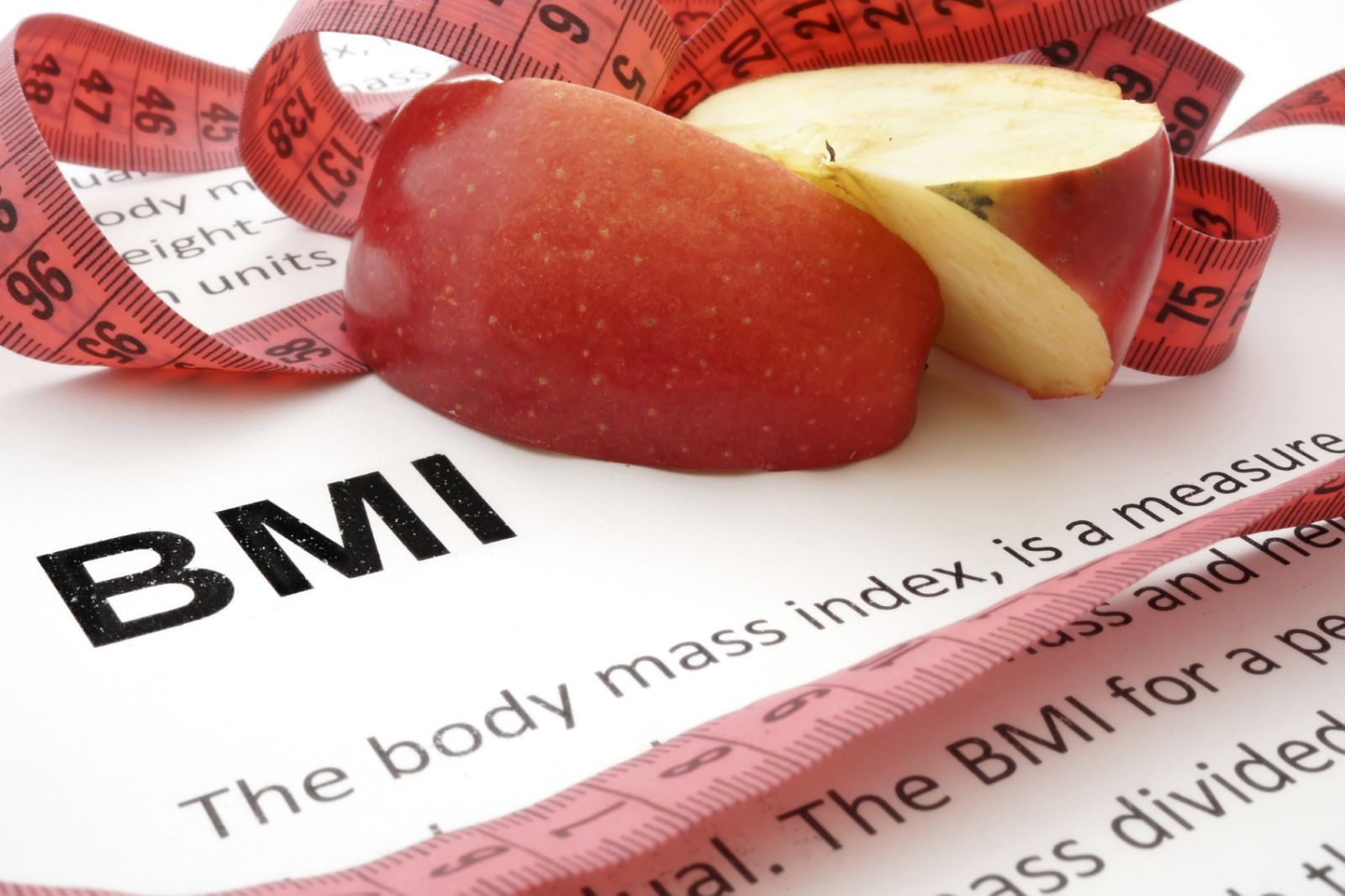
5 timeless habits for better health

What are the symptoms of prostate cancer?

Is your breakfast cereal healthy?

When pain signals an emergency: Symptoms you should never ignore

Does exercise give you energy?

Acupuncture for pain relief: How it works and what to expect

How to avoid jet lag: Tips for staying alert when you travel

Biofeedback therapy: How it works and how it can help relieve pain

Best vitamins and minerals for energy

Should you take probiotics with antibiotics?
Staying Healthy Archive
Articles
Weighing in on the value of the body mass index
Your BMI estimates your body fat better than the number on a scale. But a tape measure is an equally important tool.
As your BMI rises above 25, so does your risk for developing high blood pressure, diabetes, and cardiovascular disease.
Image: designer491/iStock
The body mass index (BMI), a measurement derived from the relationship between your weight and your height (see box), is a common way to estimate body fat. It's a simple, fast, and essentially free tool that enables doctors to help identify people who might be at risk for health problems—including cardiovascular disease—that are linked to excess body fat.
Lend a hand, help your heart?
People who do volunteer work may reap benefits beyond the satisfaction of helping others.
Doing volunteer work may give you a greater sense of purpose in life—a positive emotion that’s been linked to a lower risk of heart disease.
Image: monkeybusinessimages/Thinkstock
If you volunteer on a regular basis, perhaps you've experienced the emotional rewards of donating your time. What you might not realize, however, is that volunteering may offer some added advantages for your heart.
Cutting back on added sugar
Watching the sugar in your diet can help you control your weight and potentially avoid serious chronic health problems — for example, heart disease and diabetes.
You might be surprised at how many of the "healthy" foods you eat contain sugar. Energy bars, fruit, flavored yogurt — all are "good" foods, but many of them have a lot of sugar. So, the first step to reducing excess sugar in your diet is to read labels carefully and opt for products that are lower in sugar.
Smart chocolate choices for a healthy heart
The advice to eat chocolate should be taken with a grain of salt.
Image: Leszek Kobusinski/Thinkstock
Like bees swarming a melting candy bar, the media buzz around the purported health benefits of chocolate has been hard to ignore. The possibility that such a sumptuous treat might actually be good for your heart is very sweet news, indeed.
But there's a lot more to this story that we need to understand before going hog wild in the candy aisle, says Dr. Howard Sesso, associate professor in the division of preventive medicine at Harvard-affiliated Brigham and Women's Hospital. "Simply recommending that people eat dark chocolate as a way of improving health is very misleading, since chocolate products tend to have a significant amount of fat, sugar, and calories." Instead, he and colleague Dr. JoAnn Manson are embarking on the Cocoa Supplement and Multivitamin Outcomes Study (COSMOS), a four-year trial involving 18,000 participants that is designed to tease out the intricacies of chocolate's health-promoting nutrients (www.cosmostrial.org).
Ask the Doctor: Which exercise is best for brains?
Image: Thinkstock
Q. I heard regular aerobic exercise is better for the brain than strength exercises (resistance training). Is that true?
A. The study you probably heard about involved rats, not humans. The rats were made to engage each day in sustained aerobic exercise, high-intensity interval training, or resistance training, or they were allowed to just be sedentary. At the end of the study, the researchers examined the rats' brains. The rats doing regular aerobic exercise had more brain cells than the sedentary rats. However, the rats made to perform high-intensity interval training or the ones doing resistance training did not have more brain cells than the sedentary rats.
Foot problems? Try these tips to find comfortable shoes
Look for roomy toe boxes, soft inner soles, and sturdy heel counters to give you a better fit and help you stay on the go.
Image: Thinkstock
Bunions, hammertoes, corns, and calluses all make shoe buying a chore. But the wrong shoes can impair your mobility and independence. "Pain from any of those conditions can alter your gait," says Dr. James Ioli, assistant professor of orthopedic surgery at Harvard Medical School.
Corns and calluses
Bunions and hammertoes
A bunion develops at the base of your big toe when two bones no longer connect properly, causing the base to jut out-ward. Some people are genetically vulnerable to getting bunions. However, bunions are more likely to develop in people (often women) wearing shoes that crowd the toes.
Hammertoes are deformed, bent toes that may result from poorly fitting shoes, a ligament problem, or a bunion that pushes one toe over another.
If bunions and hammertoes don't bother you, there's no need to treat them. "I have many patients who are runners with hammertoes and bunions who successfully compete without any trouble. It's all a matter of individual mechanical issues," says Dr. Ioli. If the deformities bother you, surgery to realign the bones is possible, but that is a last resort.
Shoe hunt
Other options
Even a roomy toe box may cause a little friction when you walk. That's when using moleskin pads on your toes or feet can help. These soft pads have an adhesive backing that you attach to an affected foot or toe area, or to the inside of your shoe. It protects against friction. You can find moleskin pads in drugstores. Toe separators can help relieve pain from corns be-tween the toes.
Some shoes are designed specifically to relieve pressure on bunions. You can find them in specialty shoe stores. But prepare to pay more for these kinds of shoes. They typically run $100 to $200 per pair. Are they worth it? "If they relieve pressure points and decrease pain on the bunion or hammertoes or any deformity, that's good," says Dr. Ioli, "but you can find comfortable shoes for less if you do a little detective work."
Figure 1: Finding a comfortable fit for ailing feetWhen shopping for comfy shoes, look for these important features. |
Couch potato in midlife, smaller brain later?
Image: Yuri Arcurs/Thinkstock
News Briefs
Here's something to jolt you off the couch and get you exercising: a study published Feb. 10, 2016, in Neurology links poor fitness levels in middle age to brain shrinkage 20 years later. Researchers, including some from Harvard Medical School, looked at the cardiovascular fitness of about 1,100 people, average age of 40, who were free of dementia and heart disease. The participants had taken treadmill tests to determine their cardiovascular fitness levels based on how much oxygen their bodies used during exercise. About 20 years later, participants took another treadmill test and underwent neuropsychological testing and MRI brain scans. The scans showed that people who were unfit in middle age had smaller brains in older age, compared with people who were fit in middle age. This doesn't prove that inactivity in midlife causes brain shrinkage. But previous studies have shown that regular, moderate-intensity exercise may be associated with slower brain aging.
5 key questions to help you develop a caregiving plan
If you're taking on the role of caregiver for the first time, you probably have many questions: What exactly will it entail? Where can you find help? How do you even start?
When faced with this kind of uncertainty, the best thing you can do for your loved one — and yourself — is to make a caregiving plan. Of course, your loved one's needs may change over time, and you can never plan for every last detail or eventuality. But if you begin by covering the basics, you will have an important foundation to build on later.

5 timeless habits for better health

What are the symptoms of prostate cancer?

Is your breakfast cereal healthy?

When pain signals an emergency: Symptoms you should never ignore

Does exercise give you energy?

Acupuncture for pain relief: How it works and what to expect

How to avoid jet lag: Tips for staying alert when you travel

Biofeedback therapy: How it works and how it can help relieve pain

Best vitamins and minerals for energy

Should you take probiotics with antibiotics?
Free Healthbeat Signup
Get the latest in health news delivered to your inbox!
Sign Up











